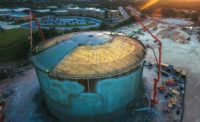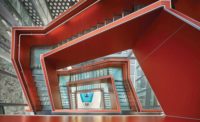As California construction activity continues to sizzle, contractors are hustling to keep up with the rising demand for new projects and the ever tightening labor market.
“My impression of California is that construction remains hot across numerous segments, particularly transit projects in several large metro [areas] and selected office, entertainment, amusement, sports and mixed-used projects,” says Ken Simonson, chief economist for the Associated General Contractors of America.
ENR’s top firms in the region are feeling the demand. California’s 75 largest contractors that reported their numbers to ENR California tallied 2018 revenue of $39.58 billion, up 8.3% from 2017, with ENR California’s top 10 contractors posting $18.27 billion in 2018 revenue, a nearly 9% jump from a year ago.
Meanwhile, a recent AGC of America analysis of U.S. Dept. of Labor data reported California adding 32,200 construction jobs between May 2018 and May 2019—the second most in the nation.
|
Related Link |
“Construction in California is a hotbed and definitely booming,” says Dan Rogers, president of Blach Construction. “We haven’t seen much of a slowdown in years but a continued domino effect. The influx of tech start-ups demanding [tenant improvement] work, and larger, established companies expanding campuses with new construction are also driving an intense need for new transit-oriented, mixed-use developments.”
Transit-oriented development activity is increasing demand for all components of community building, including housing, schools, health care facilities and retail and entertainment centers, says Rogers.
Rogers points to Blach’s current project, the nearly $90-million Kinesiology and Wellness Building at Canada College in Redwood City, Calif. Other notable Blach projects include the Bay Area’s estimated $300-million Gateway at Millbrae, a joint venture with Cahill Contractors, which includes 150,000 sq ft of offices, 400 apartments, a hotel, retail and restaurants.
Layton Construction is busy across all sectors, says John Thornton, Layton’s executive vice president. His company’s focus in the region is on higher education and advanced technology. While it’s good to be active, Thornton warns that several factors will affect the functionality of the market’s growth.
“The first concern is that subcontractors are overwhelmed with opportunities, so early involvement with subcontractors on any preconstruction effort is important,” he says. “Allowing them three to four weeks to provide their bids is an absolutely minimum amount of time in this very busy market.”
A second factor is the difficulty of finding experienced project management and field staff, says Thornton. “All contractors are busy, everyone is trying to hang on to employees, and while we recruit from colleges, it’s difficult to train new employees quickly enough to respond to the demands of the market.”
Layton’s current projects include $45 million of ground-up construction and rework of an existing water district facility and maintenance yard for Mouton Niguel Water District in Laguna Hills, Calif.; San Diego’s $34-million Mingei International Museum in Balboa Park; and a $24-million contract for an Element Hotel by Marriott in Irvine, Calif.
At the same time, Layton has landed multiple health care projects across California with starts this year for nearly $400 million in regional work.
DPR Construction feels the boom as well. “Our crews on the ground are very busy with a strong list of active projects and, with over $2 billion in sales year to date, we have a backlog that will keep us busy into 2021 and beyond,” says Jody Quinton, DPR management committee member.
DPR’s biggest starts are in health care, with four major new facilities in Southern California. DPR also is working on data centers, life science projects and several manufacturing facilities in Los Angeles and Orange County.
“Office build-outs for advanced-tech customers, higher education and hospitality work round out our 2019 sales,” Quinton adds.
DPR’s current projects include the $33-million McGregor Computer Science Center at Harvey Mudd College in Claremont, Calif. The 36,000-sq-ft, three-story building is targeted for a 2021 completion.






